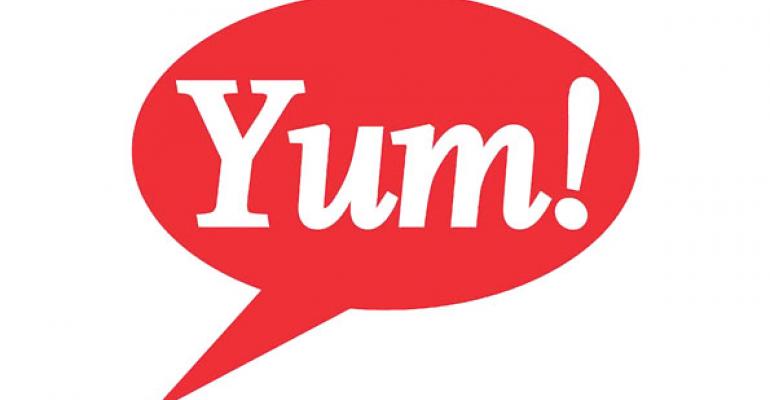Two investors known for their activism have taken positions in Yum! Brands Inc., which could put pressure on the quick-service operator to make changes to improve shareholder value.
Third Point LLC, founded in 1995 by the investor Daniel Loeb, revealed a “significant stake” in Yum in a letter to investors Friday. Loeb is known as an activist, but has been friendlier to target companies of late, according to the Wall Street Journal.
Loeb’s letter hardly sounds like someone gearing for a major push to boost shareholder value. And it’s still uncertain whether Third Point will take an activist position.
“We think investors should want to own Yum for its unique, open-ended, middle-class growth story in China, and its strong and growing franchise-led cash flows outside China,” Loeb wrote. “We also expect that Yum management, consistent with their prior public statements, will consider a variety of value-enhancing actions to ensure that the market properly rewards its investors for both compelling earnings streams.”
Corvex Capital has also taken a “large stake” in Yum, making it one of the company’s five largest shareholders, according to CNBC.
Corvex, led by Keith Meister, is another activist investor that has quickly become a Wall Street power player.
Yum’s stock price rose more than 5 percent Friday on the news.
Activist investors have taken an interest in restaurants in recent years, targeting companies that are underperforming the market but which have value. In particular, they are targeting companies that have assets to spin off, or those that have room to boost shareholder value through stock buybacks or other means.
There has been growing speculation that an activist could take a position in Yum, given the chain’s multiple, moving pieces and its struggles in China over the past year.
Stifel analyst Paul Westra suggested in a note Friday that an activist in Yum was “inevitable.”
Baird analyst David Tarantino wrote Friday that the very presence of activists in the background could push management at Yum to make changes that investors want.
“We suspect the mere presence of an investor that has shown activist tendencies in the past will help support investor sentiment,” Tarantino wrote.
Loeb’s letter described what he sees as significant potential in earnings growth at Yum, while also suggesting ways for the company to improve performance of its KFC and Pizza Hut brands outside China.
The company “is in the early stages of turning the page on recent troubles in the China business,” Loeb wrote. Yum “has built an enviable consumer franchise in China,” he continued, and now operates 7,000 KFC and Pizza Hut restaurants in more than 1,000 cities in China — three times as many as McDonald’s. The company owns 80 percent of its units there.
Yum has struggled in China due to food safety issues. The average unit in China generates $1.3 million a year in sales and 15 percent in operating margin, Loeb wrote. Before the issues, restaurants averaged $1.7 million in sales and 20-percent margins.
Loeb suggested that KFC still resonates with local consumers, who believe the food is as safe as other items, and that consumers are simply eating there less frequently.
“As a rule of thumb in the restaurant industry, it is easier to generate more business from existing customers than it is to capture new ones or win back those who have left the brand,” he wrote.
Yum CEO Greg Creed “is taking a more active role in Chinese operations, an important departure from previous management’s practices,” Loeb noted.
But Loeb also said that management is focused on improving the business outside China, particularly “narrowing the sizable performance gap” between KFC and Pizza Hut and their competitors in the U.S.
KFC generates lower sales and has thinner profits than Popeyes, Bojangles and Chick-fil-A, he said, adding that the chicken chain needs to add more sandwiches to its menu, expand hours, and improve speed and quality of service.
Pizza Hut has a different challenge, as it started as a casual-dining restaurant that expanded into delivery. The company generates $800,000 in average unit volumes, with an 8-percent operating margin. Domino’s generates a 23-percent margin, Loeb wrote, with the same level of sales in smaller units.
“Pizza Hut can win on taste, but it needs to do better on speed and convenience to become a better alternative for the heavy users that drive the category,” he wrote. “Investing in digital and a network of small-box delivery models should help.”
Contact Jonathan Maze at [email protected]
Follow him on Twitter: @jonathanmaze




